What is the meaning of the Vietnam flag?
The meaning of the Vietnamese flag features a rectangular shape with a width two-thirds of its length. A bright five-pointed golden star sits at the center of the vibrant red background, symbolizing unity and the spirit of the Vietnamese people.
The Vietnam flag, with red background and iconic yellow star meaning a powerful story of struggle, resilience, and unity. Seen flying proudly across the country, this flag holds deep meaning, with each color and symbol carrying rich historical significance.
Immerse yourself in the best experiences Vietnam has to offer with our carefully designed trip that caters to the needs of most discerning travelers, check out Vietnam Tours
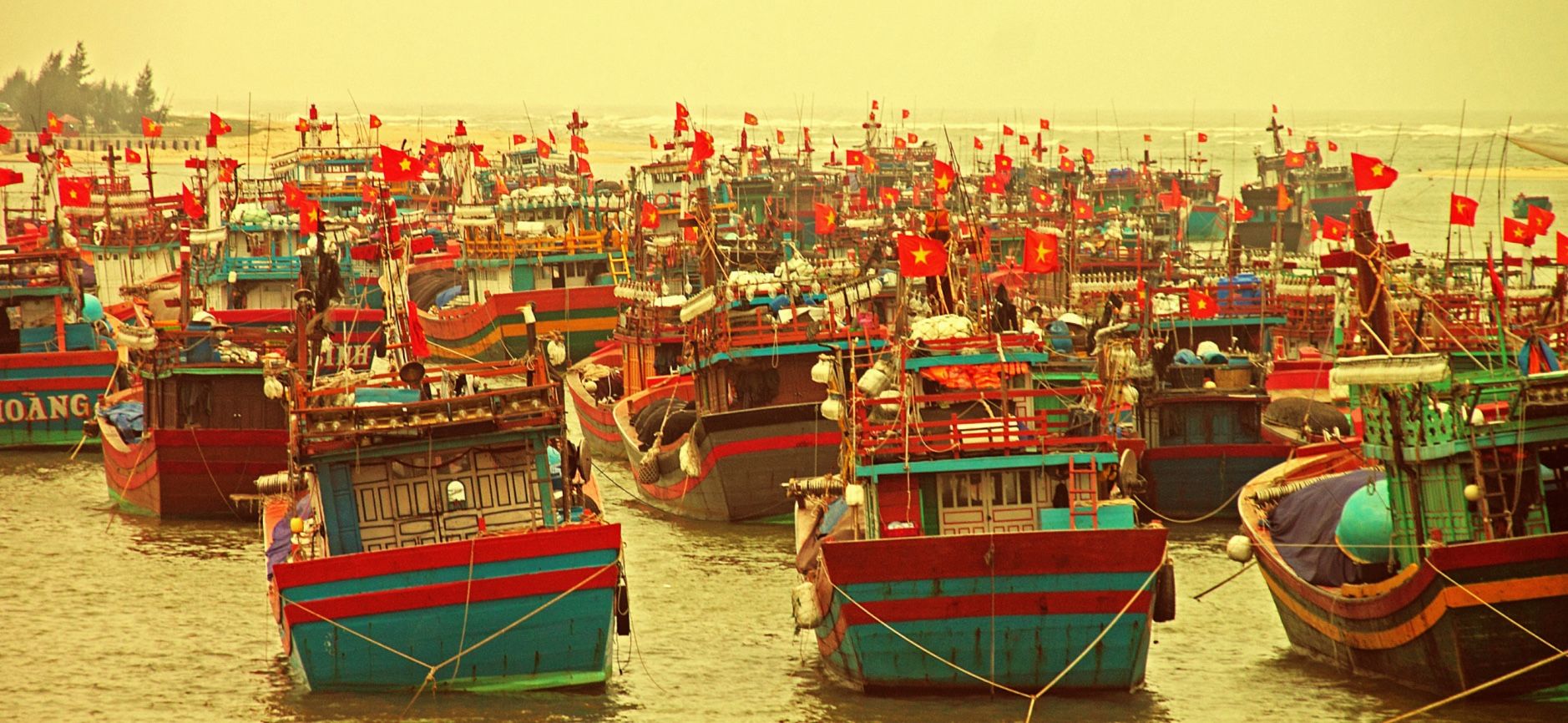
History of the Vietnamese Flag
The history of the Vietnamese flag reflects centuries of evolution, shaped by the region’s ruling empires and dynasties. Early versions of the flag represented specific kingdoms, but the current design emerged during Vietnam’s independence movement, highlighting courage and sacrifice. Officially introduced in 1976 after reunification, the flag’s red background symbolizes the nation’s struggles, while the yellow five-pointed star represents unity and the hardworking spirit of the Vietnamese people.
How does the Vietnam Flag look like?
The evolution of the Vietnamese Flag
The Vietnam flag, a symbol of independence and unity, first appeared on November 23, 1940, in South Vietnam during the resistance against French colonial rule. Designed by Nguyen Huu Tien, a revolutionary leader, the flag featured a red background with a yellow star representing national solidarity.
In 1941, the Viet Minh, led by Ho Chi Minh, adopted the Vietnam flag as their emblem at a conference. On August 16, 1945, in Tan Trao Village, it was declared the official flag of Vietnam. Following Vietnam’s independence declaration on September 2, 1945, in Ba Dinh Square, Hanoi, the flag became the symbol of North Vietnam.
What does Vietnam red flag with yellow star mean?
On important occasions like Tet Holiday (Vietnam’s lunar new year), Reunification Day, and National Day, Vietnamese proudly display the flag outside homes and across streets. The flag is also a popular motif on T-shirts and souvenirs, reflecting its significance in Vietnamese culture and national pride.

What does the Vietnamese flag symbolize?
The Vietnamese flag stands out with its powerful symbols and vibrant design. At its center, the five-pointed yellow star symbolizes unity and harmony among Vietnam’s social classes: workers, farmers, soldiers, intellectuals, and business people. The star also serves as a powerful icon of the Vietnamese communist revolution and the nation’s ideals.
The flag’s symbols reflect the nation’s struggles for independence, freedom, unity and solidarity. The flag communicates the pride and resilience of the Vietnamese people. It appears in official ceremonies, national events, and everyday settings, allowing citizens to express their love and loyalty to their homeland.
Vietnam Flag during the declaration of independence
The Vietnam flag during the Independence War served as a powerful symbol of resistance and the fight for freedom. Proudly displayed by Vietnamese army, it represented unity, determination, and the nation’s struggle against colonial forces. The flag inspired global liberation movements and attracted international support for Vietnam’s cause.
Seen in old photos in the battlefields and war era, the flag became an icon of hope, rallying the people to continue their fight for independence.

Official use of Vietnamese Flag
The Vietnam flag on official uses and protocol, just like any country, is prominently displayed during official occasions, ceremonies, national holidays, political events, and important celebrations. It flies on government buildings, schools, embassies, and during military ceremonies, as well as at the funerals of soldiers and national leaders.
Things not to do with the Vietnamese flag
- Using any variation of the Vietnam flag than the official one
- Writing offensive messages on the flag
- Tearing the flag
- Flag desecration
The national Vietnam flag in popular events
The Vietnam national flag is a must presented symbol in the country’s popular events and culture, appearing in art, music, sports, and events. It is a powerful representation of national pride and unity, often displayed during rallies, football matches in the stadiums, and public to express social messages.
The national flag’s image is widely used in various forms of artistic expression, reflecting Vietnam’s cultural heritage and the collective spirit of its people. Whether in sports events or cultural celebrations, the Vietnam flag inspires pride, resilience, and the enduring strength of the nation.
Witness the Flag raising ceremony, Ba Dinh Square, Hanoi
To watch the Vietnam’s flag raising ceremony, in early morning or in the evening of weekdays, visit Ba Dinh Square where Ho Chi Minh’s mausoleum is to see the flag raising and lowering ceremony. In the tourist map of Hanoi, this place is always ranked in the top position to visit.
Flag raising ceremony is one of the meaningful experience in Vietnam – the flag raising and lowering ceremonies at Ba Dinh Square in front of the Ho Chi Minh Mausoleum in Hanoi. Indeed, witnessing these ceremonies can be a culturally enriching and patriotic experience. The flag raising ceremony in Ba Dinh square starts around 6AM. Ba Dinh Square is a significant historical site in Vietnam, and it holds great importance in the Vietnamese modern history. The square is named after the Ba Dinh Uprising, a crucial event in the country’s history, and it is often a focal point for national ceremonies and celebrations.
Overall, Ba Dinh Square and the Ho Chi Minh Mausoleum offer a significant cultural experience, making it a noteworthy stop for those exploring Hanoi and wanting to connect with Vietnam’s rich heritage.
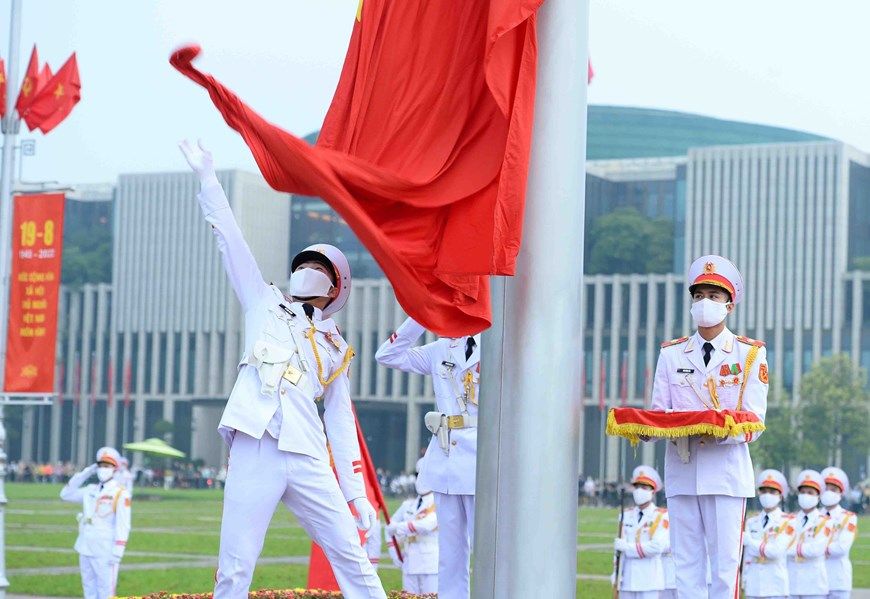
Seven Vietnamese Flag Towers Worth a snapshot
1. Lung Cu Flag Tower
You may want to check Ha Giang Loop Tour
The architecture of the Lung Cu Flag Tower is a harmonious blend of traditional Vietnamese elements and French colonial design. The structure features a sturdy stone foundation and a tall mast proudly displaying the national flag of Vietnam. The tower’s design reflects the cultural synthesis that occurred during Vietnam’s complex history, making it a unique and compelling landmark.
For those planning to explore the wonders of Ha Giang, a visit to the Lung Cu Flag Tower is a must. The journey to the tower is an adventure in itself, with scenic routes that offer glimpses of Vietnam terraced rice fields, ethnic villages, and the Dong Van Karst Plateau Geopark. Once at the Flag Tower, visitors can immerse themselves in the rich history and natural beauty of the region.
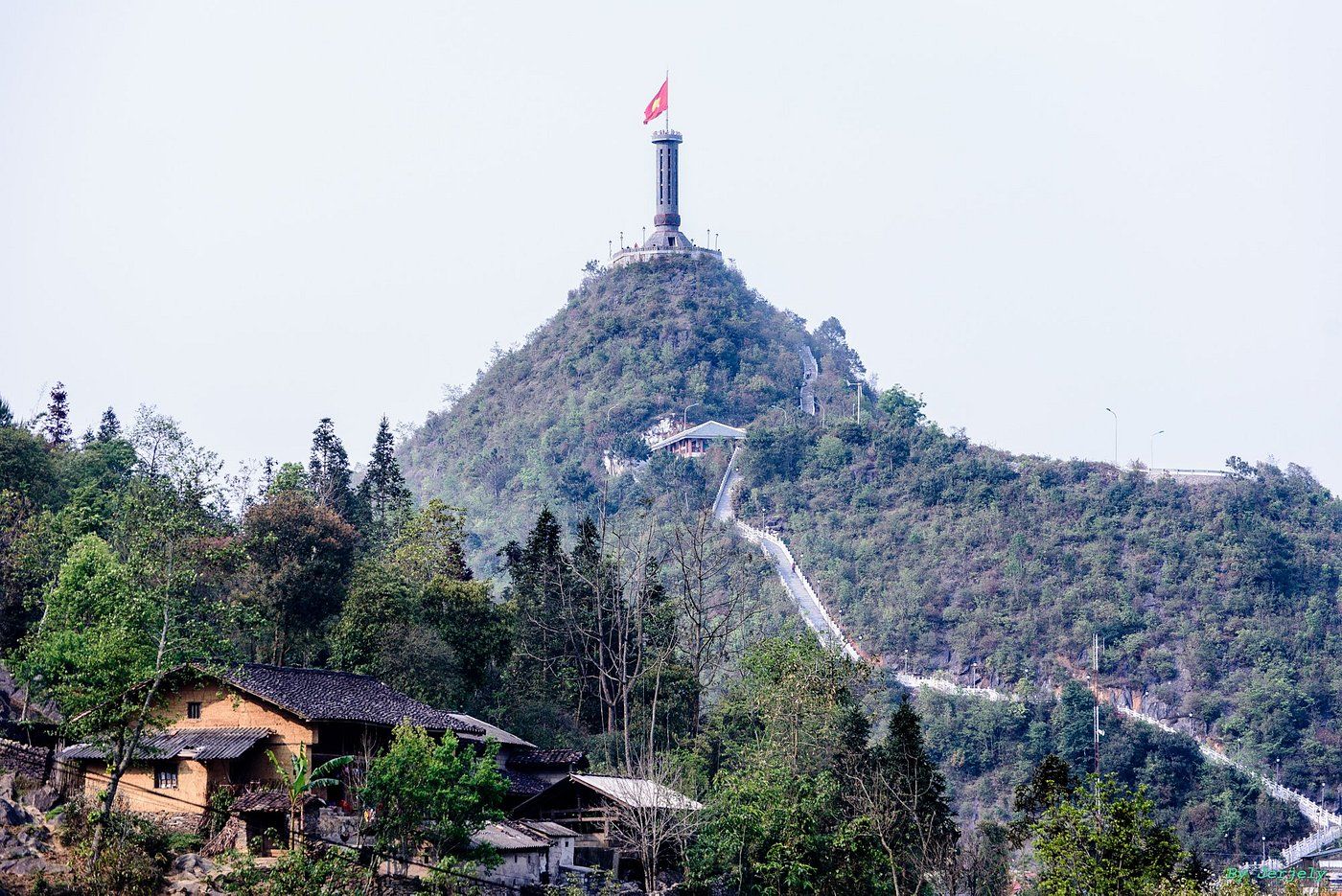
2. Hanoi Flag tower
In the heart of Vietnam’s Capital, Hanoi, the Flag Tower stands as a silent guardian, the flag tower was built between 1805 and 1812 under the reign of King Gia Long and is over 2 centuries old. As a testimony of history and cultural pride, the Hanoi Vietnam Flag Tower invites locals and tourists to explore the rich tapestry of Vietnam’s past and appreciate the enduring legacy that continues to unfold within its historic walls.
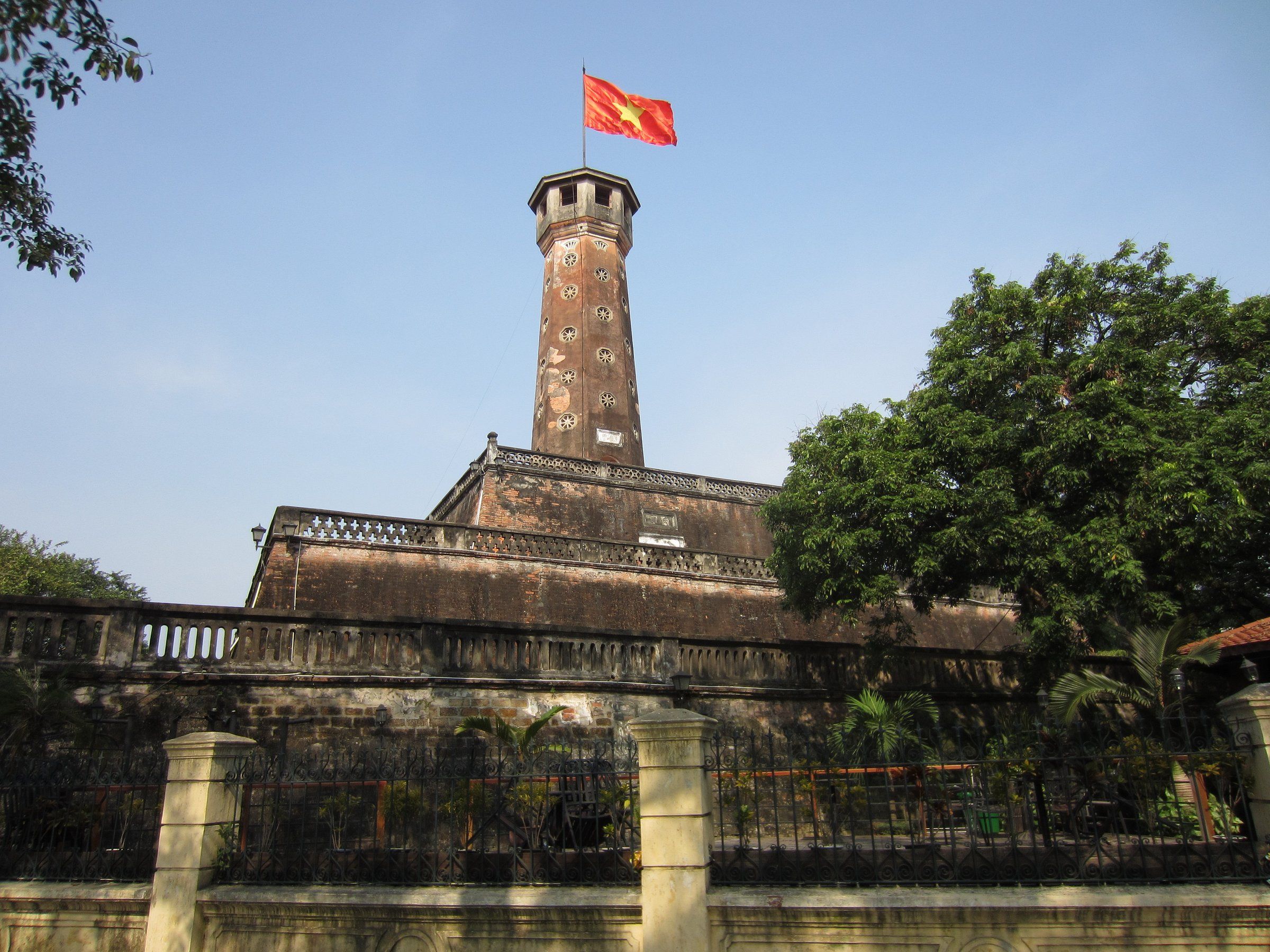
3. Nam Dinh Flag Tower
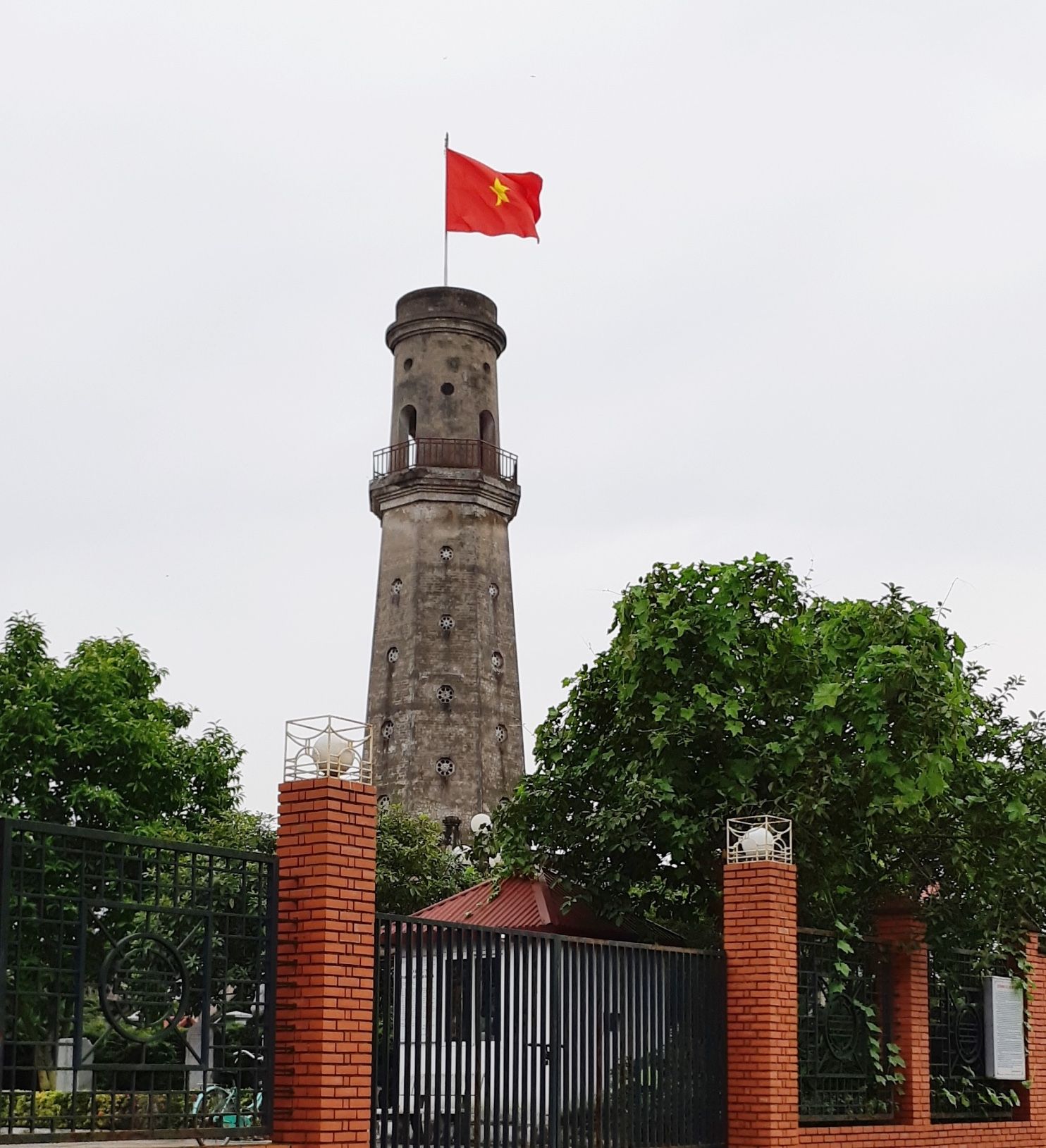
4. Hien Luong Flag Tower
Among the flag towers in Vietnam, the Hien Luong flap tower, a majestic 38-meter structure nestled on the northern bank of the Ben Hai River in Quang Tri, Central Vietnam. This iconic monument holds profound historical significance, serving as a poignant reminder of the country’s resilience and unity during the Vietnam War.
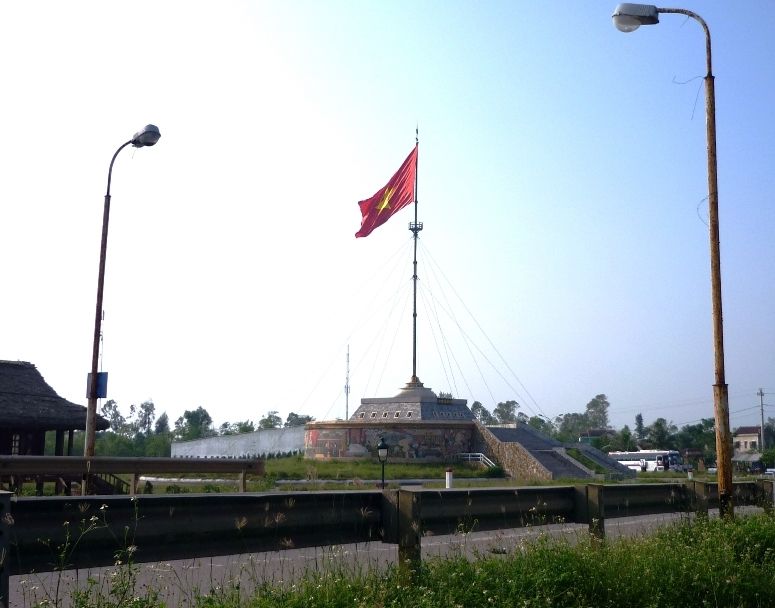
5. Hue Flag Tower In The Imperial Citadel
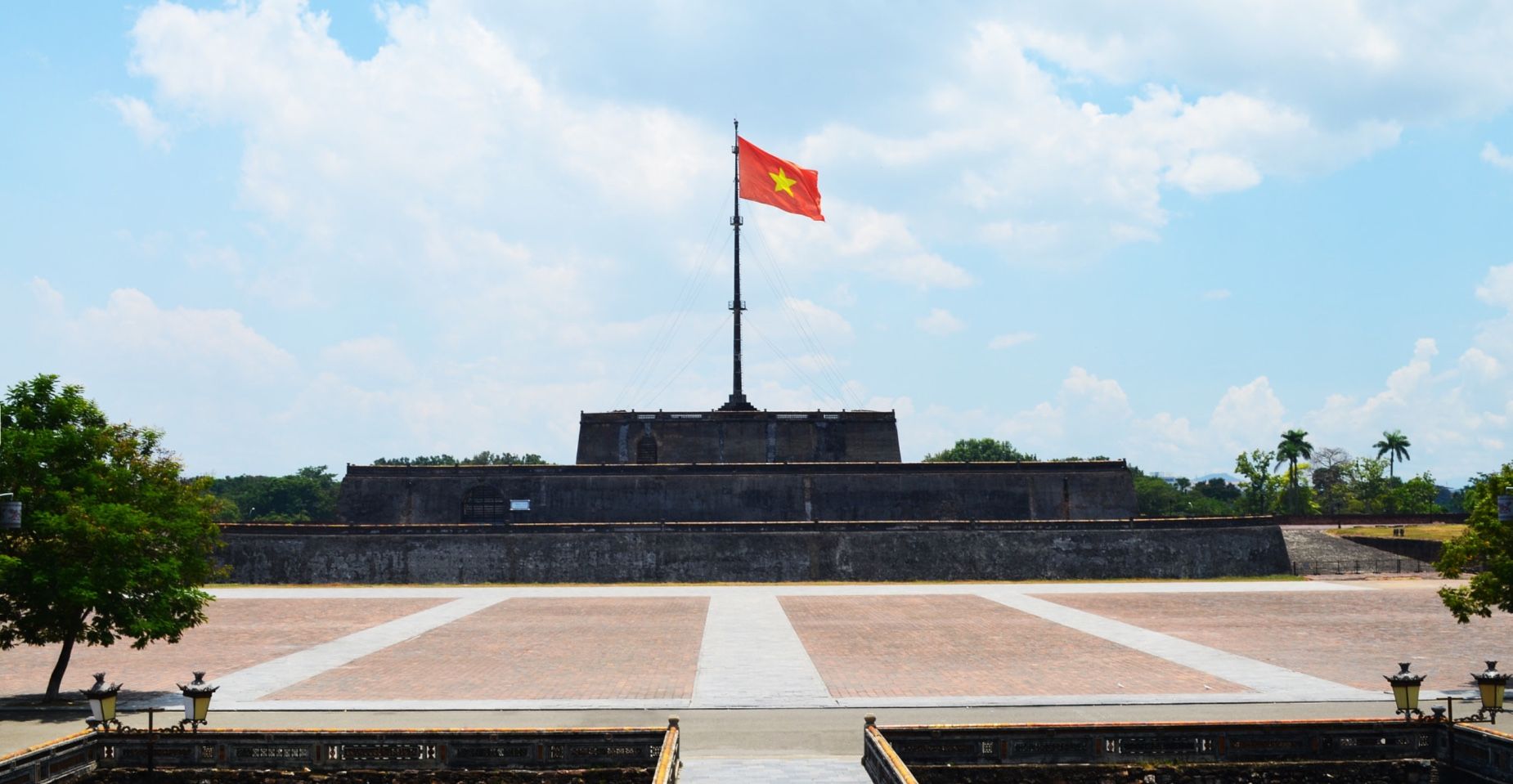
6. Thu Ngu Flagpole

7. Flag Tower of Ca Mau Cape
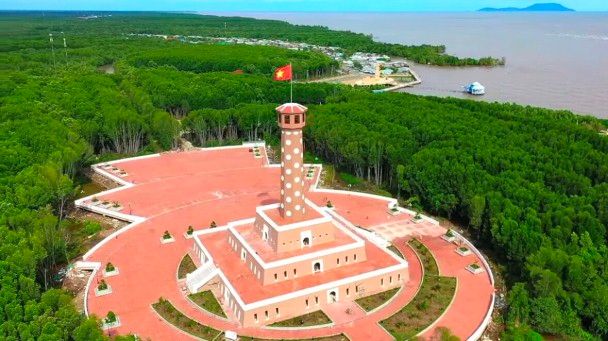
FAQ: Vietnam Flag
What are the two flags in Vietnam?
Why does Vietnam have two flags? Each with its own history and meaning. The first is the national flag, featuring a red background with a yellow five-pointed star in the center. The second flag is the communist flag, which consists of a red background and includes the iconic hammer and sickle symbol, representing the communist ideology. Both flags reflect important aspects of Vietnam’s history and political identity.
Why is the Vietnam flag similar to China?
Why do the Vietnam and China flags look similar? The Vietnam and China flags appear similar because both countries are governed by communist parties. The red background and yellow star have long been symbols of communism, representing the unity and strength of the working class. This common symbolism has been used for over a century, linking both flags to their shared communist heritage.
What does the 5 color flag of Vietnam mean?
The official, national flag of Vietnam features two main colors: red, which represents blood, and yellow, which symbolizes the skin color of the Vietnamese people. Additionally, the yellow star in the center, with its five points, represents the five key groups of society at the time: intellectuals, farmers, workers, business people, and soldiers.
What is the Buddhist flag in Vietnam?
The Buddhist Flag in Vietnam consists of six vertical strips of equal width. From left to right, the first five strips are blue, yellow, red, white, and pink or light orange. The sixth strip features five horizontal strips of equal width, with the same colors in the same order, from bottom to top.

What does the star mean in Vietnam?
The golden star in the middle of Vietnam’s flag, represents the soul of the nation, and its five points symbolize the five main classes in Vietnamese society—intellectuals, farmers, workers, business class, and soldiers. The red background symbolizes revolution and bloodshed. The star is the symbol of the Socialist Republic of Vietnam.




